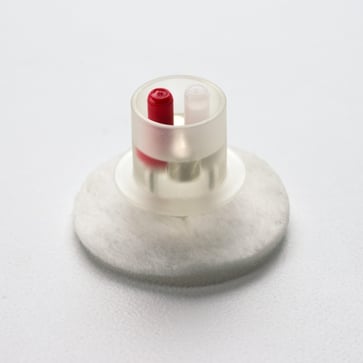Animal catheterization serves a valuable tool to reduce experimental variability in several ways. It allows for consistent dosing as well as consistent blood sampling, while at the same time decreasing stress to animals and their handlers. But not all catheter types are created equally. Understanding the different options will help you select the optimal rodent surgical model for your study.
 1. Catheter material
1. Catheter material
Selecting the right catheter material is critical – optimal selection will help ensure reliable and reproducible study outcomes. The most popular catheter materials are polyurethane (PU), silicon, and polyethylene (PE), but each have their own advantages and disadvantages depending on other variables such as desired site of insertion, length of the study and drug and vehicle characteristics.
Significantly, the physical and chemical attributes of the catheter material can affect biocompatibility. Catheters with low biocompatibility can result in adverse effects which may harm the animal and waste valuable time, money and data. Some catheter materials are better suited for certain types of chemical compounds and vehicles; for instance, PU is considered most compatible with many solvents and vehicles commonly used in drug formulation. As a result, PU is the catheter material of choice in infusion studies. Our surgical model selection considerations e-book provides a table with general guidance on the compatibility of catheter materials with experimental agents and commonly encountered vehicles.
2. Exteriorizations
The most appropriate exteriorization is dependent upon the study design. In general, standard fixed catheters are used for short-term studies where the animal will receive minimal dosing and sampling will occur over a period of less than two weeks. One benefit to these catheters is their relatively inexpensive price. On the other hand, they require animals be individually housed since animals housed in groups may access the ends of other animals’ catheters and tamper with them, compromising both catheter integrity and animal health.
When it comes to longer term studies, researchers should consider using a closed system, such as the following:
- Vascular access button (VAB): Surgically implanted under the skin, these systems feature an external port with a septum, which creates a closed system. Permits group housing
- Vascular access port (VAP): Another system that is surgically implanted under the skin, but it does not exit the skin, which prevents animal catheter tampering. Ideal for long-term access
- PinPort™: This system is intended for manual and intermittent access. It features an external port that can be accessed by an injector/connector countless times. Requires specialized injectors for port access
- Rat harnesses: This is a closed system with automatic or manual access, featuring an external port housed in a harness as well as a spring tether with a connector that punctures the septum of the system
- Rat jackets: These are vest-like polyester or spandex garments that protect the catheter; the catheter can be accessed without removing the jacket. Requires single housing
3. Study design implications
Before initiating a study, researchers must examine the study type, duration, recommended catheterization and recommended exteriorization to ensure compatibility. For example, is the study short term or long term? Will multiple doses be given throughout the duration of the study? Will the study use mice or rats? Will the study use infusion, sampling or both? By carefully considering these questions and consulting with experts in the field, researchers will be able to select the appropriate rodent surgical model for their study.
4. Rodent species/strain
The final piece of the puzzle is selecting the right animal species and strain. Phenotypic differences can impact the success of the catheterization and, eventually, the study. For instance, rats have a larger blood volume, which is noteworthy because less sensitive analytical procedures are used in downstream analyses.
Rats also have larger vessel size (vein or artery) than mice; as a result, the patency of rat catheters can be maintained longer than in mouse catheters. Also, rats can be catheterized with all vascular options, while vascular catheterization of mice is limited to standard fixed catheters, VABs and the PinPort™ system. Finally, different species and strains have varying degrees of tolerance and/or metabolism for various experimental agents and drug vehicles.
When choosing the right rodent surgical model for your study, there are many variables to consider. Consulting with an experienced partner prior to initiating your study is critical. For more information on selecting the most appropriate surgical model, check out our e-book on key considerations for choosing a rodent surgical model.



